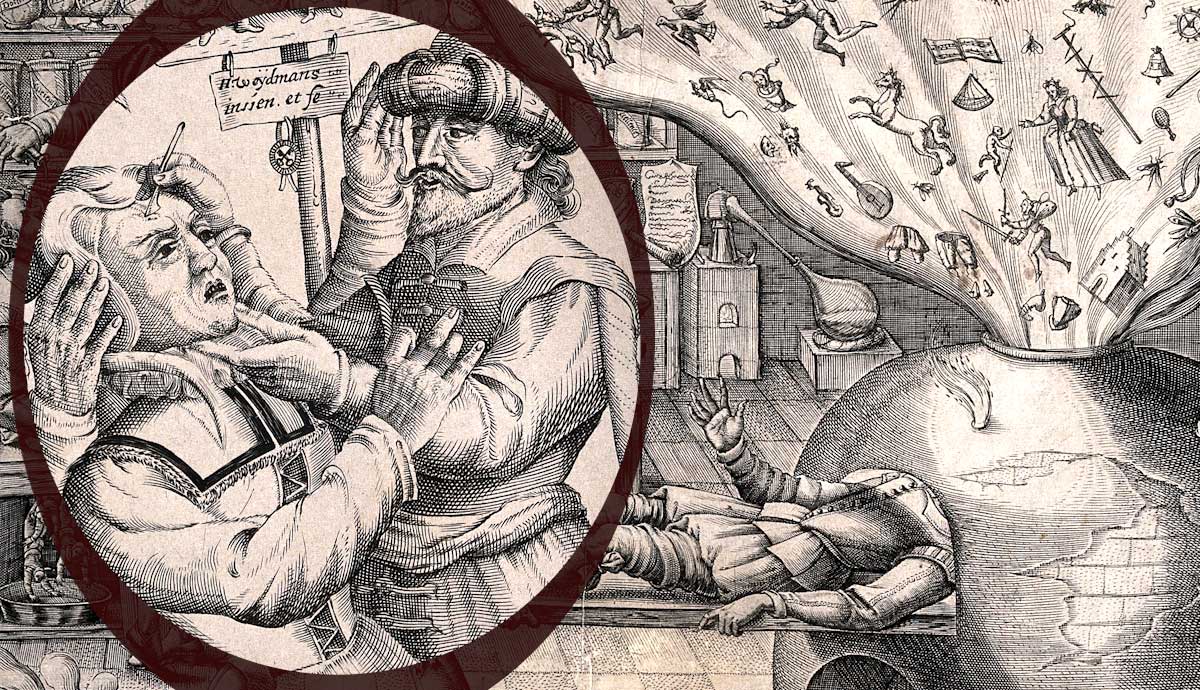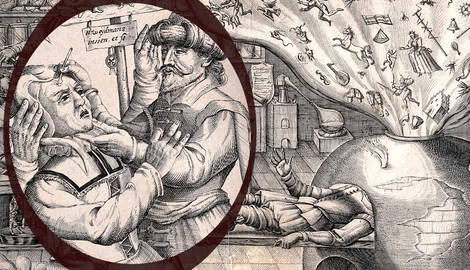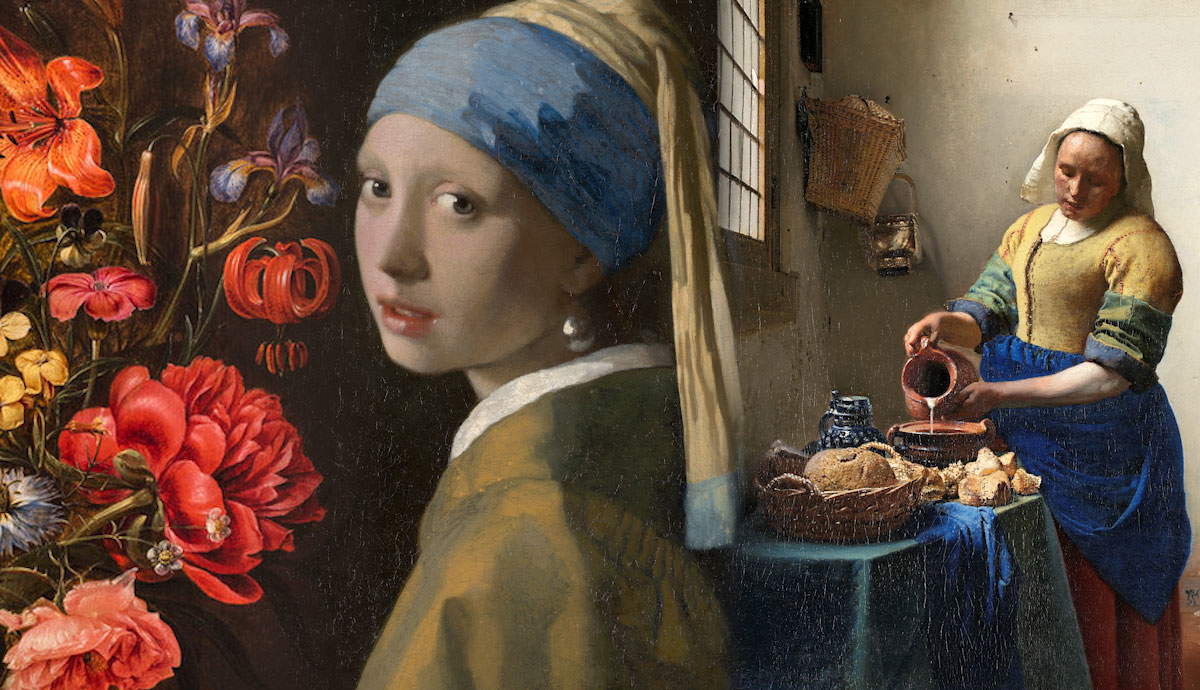
It is widely accepted that the birth of scientific psychiatry and clinical psychology dates back to the 19th and 20th centuries, with Sigmund Freud being recognized as the undisputed father of psychoanalysis. The brain and its functions and dysfunctions, however, were already fascinating objects of study for early moderns. This article uses the phenomenon of the Dancing Plague as a lens through which to observe how madness was imagined in 16th and 17th century Europe. When trying to make sense of the mind and to cure its various illnesses, early modern physicians started to question religious causes and superstitions. At times, in line with a widespread misogynistic culture, practitioners ended up pointing to women as the ultimate reason behind madness.
The Dancing Plague and Madness

Scenes of everyday life became a popular subject in early modern Northern Europe, insofar as becoming a new type of image called genre painting. In particular, Pieter Bruegel the Elder and his son Pieter Bruegel the Younger dedicated many of their paintings to the representation of peasant life, capturing both its struggles and its folkloristic aspects. Weddings are a recurring theme in their paintings, as they were rare opportunities for diversion, when communities joined together in moments of jovial, lighthearted, and exuberant celebration, visually rendered through the representation of a lively scene of collective dancing. Men and women, notwithstanding the disapproval of religious authorities towards bodily overindulgence, embrace and kiss one another while freely engaging in exciting dance moves around the bride, offering her a joyful wish of fertility and wealth.
But dancing, in other images, recounts a very different story. In a print by Hendrick Hondius I, made after the original by Bruegel the Elder, the peasants are depicted in a moment of physical struggle. Six men are attempting to hold three women still. The woman on the right seems to have surrendered to them, abandoning herself in exhaustion in the arms of the boy behind her who barely manages to withstand the dead weight of her body.

The woman on the left, instead, is still fighting for her freedom, providing a closer image of what is probably also happening on the bridge in the background. Her body twists and twirls, her head rotates sharply and unnaturally backward, but not enough to hide her desperate expression, which unveils a sense of extreme weariness and alienation. Despite the evident fatigue, her feet persevere in what could potentially kill her. The print, indeed, represents a life-threatening phenomenon that remains mysterious to this day, the Dancing Plague, which caused those affected by it to dance tirelessly until their bodies collapsed.
In the 16th century, an outbreak of this contagious insanity manifested in Strasbourg, where a woman, Frau Troffea, began to dance in the middle of a square with no music and no apparent reason. She continued to do so for six days straight, in a sort of mental trance, her face contorted by pain, disregarding those accusing her of acting foolishly. About a hundred women joined her in the frantic and spasmodic mad dance, making this phenomenon one of epidemic or mass hysteria that today is believed to depend on famine, disease, but also psychological distress caused by ingrained superstition. The fear of divine reprimands or devilish possessions was rooted in early modern Christians, insofar as persuading them, both mentally and physically, that supernatural forces were indeed capable of possessing them and of obliging their bodies to dance until death.
Early Modern Madness: Between Divine Providence and Humoral Theory

Superstition, indeed, was also one of the long-standing ways in which early moderns made sense of mental illness. God’s providence against profanity, the devil’s spite, or a witch’s malediction, were all considered to be highly viable explanations for otherwise unexplainable phenomena such as the Dancing Plague. After seconding the dance by building performance stages and by hiring musicians, in fact, the city council in Strasbourg eventually took Frau Troffea to the church of San Vitu, near Zabern, with the intention of healing her. This Saint, moreover, was often invoked against epilepsy, further suggesting that this condition was believed to be a divine punishment or a demonic possession and that prayer was widely envisioned as an effective cure.
This is further confirmed by Raphael’s Transfiguration of Christ, where a man is depicted bringing his son to the disciples, in the lower half of the painting, who point towards Jesus establishing a continuity between the lower and the upper part of the painting. The boy is having an epileptic seizure, which causes his body to get stiff, his lips to go bluish, and his eyes to get transfixed staring blankly into space. The biblical passage that the painting references precisely recounts that Jesus healed a boy suffering from severe seizures. The boy, however, is also defined as demon-possessed (Matthew 17:14-21). This passage led early modern Christians to believe that bodily convulsions were caused by a demon or an evil spirit. This even caused this disease to be named morbus daemonicus (the demonic disease).

At the same time, mental disorders were increasingly investigated in lay contexts, particularly in the growing field of medicine and anatomy which were providing new forms of knowledge about the human body. The brain was of great interest to anatomists. Leonardo da Vinci pioneered techniques that were to reveal previously unexplored areas of the organ with unprecedented accuracy.
The head was sectioned in various ways. In this image, for instance, a transverse cut was performed, which divided the skull in its superior and inferior sections. Canals connecting the face to the interior of the head, conchae, optical, auditory and other cranial nerves and vessels, were minutely drawn. In order to achieve this level of precision, the artist introduced an innovative method consisting in wax injections in the cerebral ventricles and canals, meant to cast their shape and reveal their functioning.
Similarly, Andreas Vesalius and his De Humani Corporis Fabrica (1543) contributed enormously to the advancement of neuroanatomy, mapping a highly detailed image of brain structure and the nervous system as a whole. This suggests that the anatomist was now investigating the correlation between the brain and the rest of the body. Vesalius, however, admitted that he was unable to shed light on how the brain might regulate both the functions of the body and those of the rational soul.

This suggested that the brain retained its challenges and mysteries, particularly in relation to those aspects or functions that cannot be verified by means of bodily examination, as they are ephemeral and immaterial, be it thought, reason, belief, or madness itself. Some physicians, indeed, resisted the intangibility of such phenomena, envisioning folly as a hard stone forming within the victim’s head that could be surgically extracted from the patient.
Madness was also re-interpreted medically by alchemists. Having been informed of the Strasbourg Dancing Plague, the 16th-century physician Paracelsus was the first to dispute previous superstitious views, countering them with the definition of this phenomenon as a disease, which he named chorea Sancti Viti. However, Paracelsus claimed, this disease was not to be intended as a demonic possession or a form of divine punishment, but rather as a consequence of an imbalance of bodily humors that those of loose, lascivious, or sinful character inflicted on themselves. More precisely, the dancing disease was provoked, in his opinion, by overheating and excess of blood, which could be consequently cured medically by either cooling or draining excessively heated fluids.

Alchemical practices to find the cure of mental disorders also appear in perplexing and surprising early modern prints. An engraving by Mathieu Greuter depicts two alchemists performing two different types of operations, one more stupefying than the other. On the left, a physician pours a liquid from a bottle labelled sagesse (wisdom) into the mouth of a patient, who is simultaneously excreting jesters, symbols of foolishness. The bottles arranged behind on apothecary shelves, describe the other treatments one could receive: modestie (modesty), honnestete (honesty), humilite (humility), obeissance (obedience).
On the right, a man is being pushed inside an oven by another practitioner. Fumes come out copiously from the furnace, transporting tiny and scattered images representing fantastic creatures, personified vices and indulging reveries out of the patient’s head. Among them, a lady appears, being thus equated to one of the deemed causes for the patient’s folly.
Madness and Misogyny

In his book called The diseases that deprive man of his reason, such as St. Vitus’ dance, falling sickness, melancholy, and insanity, and their correct treatment, Paracelsus, in line with misogynistic beliefs that prevailed in 16th-century Europe, blames the Dancing Plague on the lust and mischievousness of women affected by it. Women, as he argues, can malevolently contrive such illness, faking the unstoppable urge to dance and imitating seizures in order to disappoint their husbands and avoid accomplishing their social and moral duties. According to Paracelsus, thus, mental diseases were real female conspiracies, enacted by those who did not want to work and only wanted to be lazy parasites.
Widely circulating in early modern Europe, anxieties about women’s capacity to affect men’s health were also expressed by the belief in the so-called disease of fascination which had been discussed by Giovan Battista della Porta in his book Magia Naturalis (1589). This condition was described as the faculty of attractive women to produce both sexual desire and disease simply by gazing at men. By instilling their desire, indeed, they were feared to provoke both humoral and ethical consequences, leading their victims to be struck by yet another disease called love-melancholia, a condition of simultaneous anguish and thrill that Robert Burton described in his book Anatomy of Melancholy (1621) as turning the affected into an oven, a salamander in the fire, so scorched with love’s heat.
While early moderns were finding out more about the mind and many diseases by disputing superstition, these same practitioners faced the challenges of an organ that is still today is at times ungraspable and its phenomena somewhat unfathomable. Moreover, these physicians were men of their time, highly entrenched in a culture that made misogyny seem like medically informed knowledge.










